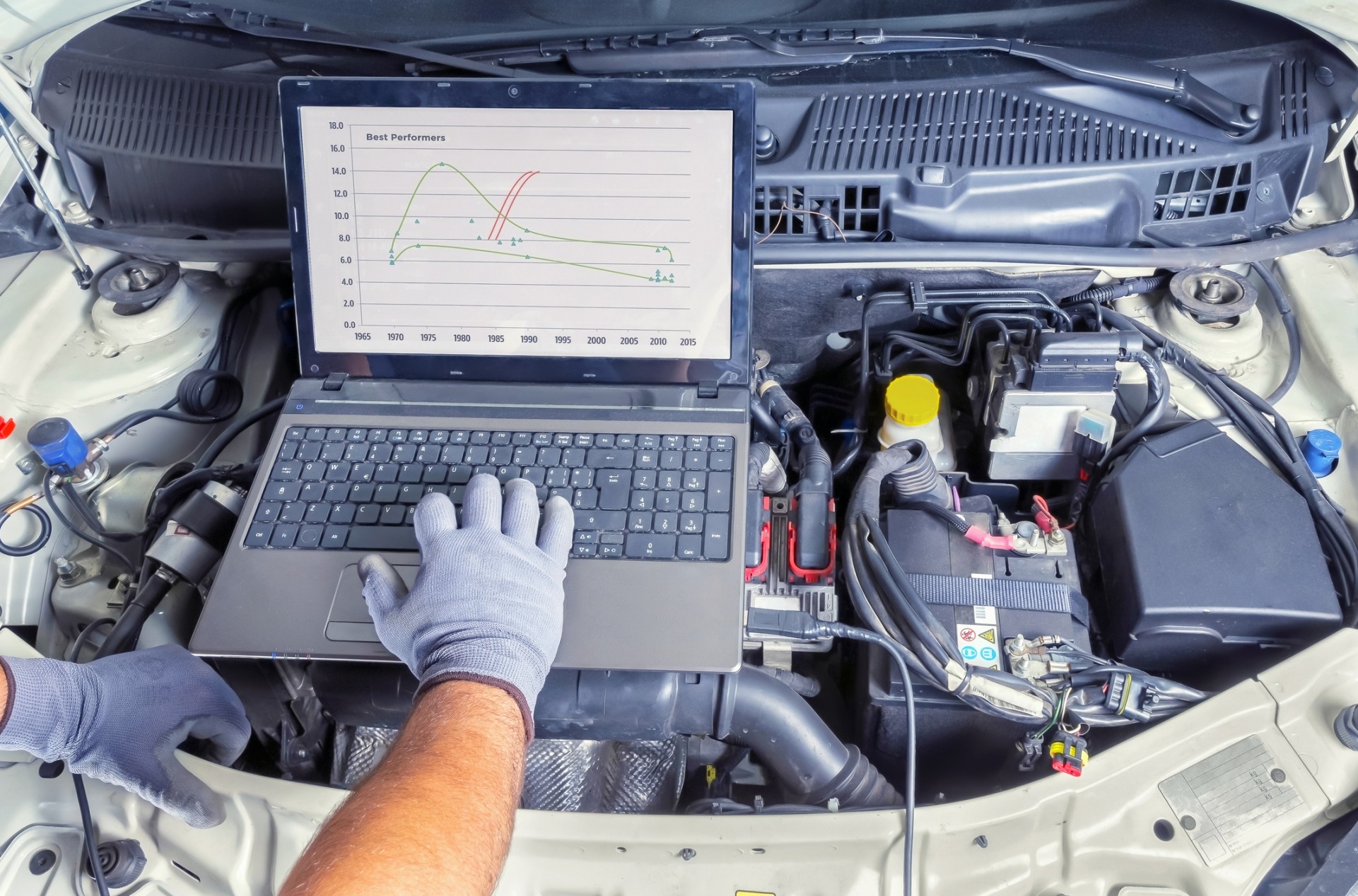Your car’s electrical system plays a crucial role in keeping your vehicle running smoothly. From powering the engine to ensuring the functionality of various components, the electrical system is a critical aspect of modern automobiles. To keep your car in top condition and prevent unexpected breakdowns, it’s essential to pay attention to electrical system maintenance. Here are some crucial tips to maintain your car’s electrical system effectively:
1. Regular Battery Checks
The battery is the heart of your car’s electrical system. Periodically check the battery terminals for corrosion and clean them if necessary. Ensure that the battery is securely fastened, and inspect the battery case for any signs of damage. If your battery is more than three years old, consider having it tested or replaced to avoid unexpected failures.
To test and replace a car battery, first, use a multimeter to check the battery’s voltage and cranking amps. If the battery is faulty, remove it and use gloves and protective eyewear to handle the replaced battery. Connect the positive terminal to the newly installed battery, followed by the negative terminal, ensuring a secure connection. Finally, tighten the battery hold-down clamp and test the battery’s performance with a multimeter to ensure it functions properly.
2. Inspect the Charging System
The alternator and the charging system keep the battery charged while the engine runs. If you notice dimming headlights or experience difficulties starting your car, it might indicate a potential issue with the battery system. Have a professional mechanic inspect the alternator, voltage regulator, and associated components to ensure they function correctly.
Ignoring signs of battery damage can lead to frustrating and potentially costly problems. A faulty battery can result in inconsistent starting and stalling, making it difficult to impossible to start up your car. Additionally, a damaged battery can drain power from other electrical components, leading to malfunctioning headlights, windshield wipers, and electrical accessories like radios and air conditioning. If left untreated, a failing battery can result in a complete electrical failure, leaving you stranded and potentially causing further damage to your vehicle’s electrical system.
3. Check Wiring and Connections
Faulty wiring or loose connections can lead to electrical problems in your car. Routinely inspect the wiring harness for wear, damage, or exposed wires. Tighten loose connections, and replace damaged wires promptly. Properly functioning wiring is essential for your vehicle’s performance and safety.
To prevent electrical failures in the future, it is important to have regular inspections and maintenance performed on your battery and charging system. This includes having your battery tested and replaced if it is over three years old, as well as having your professional mechanic inspect the alternator, voltage regulator, and associated components. Additionally, regularly inspecting the wiring harness for wear, damage, or exposed wires and tightening loose connections can help prevent electrical problems.
4. Test Lights and Indicators
Faulty lights compromise your safety and cause legal issues. Regularly check all exterior and interior lights, including headlights, brake lights, turn signals, and dashboard indicators. Replace any burnt-out bulbs promptly, and ensure the lighting system functions correctly.
Faulty lights can lead to legal issues on the road as they make it unsafe for other motorists to see you properly. This can result in accidents and potential citations for violating traffic laws. Additionally, faulty brake lights especially can be dangerous, as they make it harder for vehicles behind you to know when to slow down, increasing the risk of rear-end accidents.
5. Keep an Eye on Fuses
Fuses protect your car’s electrical components from overloading and short circuits. If a specific electrical component stops working, check the corresponding fuse. Refer to your car’s manual to identify the location of fuses and replace any blown fuses with the correct amperage rating.
Fuses have different amperage ratings, which indicate their capacity to handle a specific amount of electrical current. Common amperage ratings for fuses include 5, 10, 15, 20, 25, 30, and 40. the higher the amperage rating, the more electrical current the fuse can handle. Using the correct amperage fuse is crucial for protecting your car’s electrical components and preventing electrical fires or further damage. Using a fuse with a higher amperage rating can lead to overheating and failure of the fuse, while using a fuse with a lower amperage rating may not provide sufficient protection, risking electrical malfunctions and damage.
6. Invest in Surge Protection
Modern vehicles are equipped with sensitive electronic components that can be damaged by power surges. Consider installing surge protectors or voltage stabilizers to safeguard your car’s electronics. This is especially true if you live in an area prone to electrical issues or jump-start your vehicle.
Using the correct amperage fuse is crucial for protecting your car’s electrical components and preventing electrical fires or further damage. A fuse with a higher amperage rating can lead to overheating and failure of the fuse, while using a fuse with a lower amperage rating may not provide sufficient protection, risking electrical malfunctions and damage. Therefore, it is important to use the appropriate amperage fuse to ensure the proper function and protection of your car’s electrical system.
7. Professional Diagnostics
If you experience persistent electrical problems or warning lights on your dashboard, seek professional diagnostics. Modern cars often have complex electronic control units (ECUs) that require specialized equipment for an accurate diagnosis. A qualified mechanic can identify and address the underlying issues, preventing further damage to your car’s electrical system.
Common warning lights in a car include the engine warning light, TPMS (Tire Pressure Monitoring System) indicator light, oil warning light, ABS (Anti-Lock Braking System) brake light, airbag indicator light, and battery warning light. The engine warning light could indicate that the engine is not getting enough fuel or that there is a problem with the ignition system. The TPMS indicator light may go on if there is a flat tire or low air pressure issue. The oil warning light may come on if there is a low oil level or a problem with the oil pressure sensor. The ABS indicator light may illuminate if the ABS malfunctions. The airbag indicator light may turn on if the airbag system is defective. The battery warning light may come on if there is a dead battery or a problem with the battery charging system. Drivers need to address these warning lights promptly to avoid further damage to the vehicle’s electrical system and potential safety hazards.
By incorporating these essential tips into your car maintenance routine, you can ensure the longevity and reliability of your vehicle’s electrical system. Regular checks and timely repairs will save you money in the long run and contribute to a safer and smoother driving experience.
1. First, check if the light blinks or stays on. Blinking lights typically indicate an issue and should be checked immediately. In contrast, constant light may not necessarily pose a driving risk but should still be addressed soon.
2. If the light is blinking or constantly on, you should pull over and turn off your car. Do not drive with the lights on, as this can cause further damage.
3. Contact a professional mechanic or car service provider to schedule an inspection. They have the expertise and equipment to diagnose and address electrical issues.
4. If the light is off, it’s still recommended to have your car checked by a professional the next time you service or maintain it. This will help identify and address any potential issues before they worsen.
5. During inspection, the mechanic will check if the light indicates a specific problem, such as low oil or a flat tire, and address it accordingly.
6. Once the problem has been identified and repaired, the mechanic will turn off the warning light on the dashboard.
7. Remember, addressing warning lights promptly is crucial to prevent further damage to your car’s electrical system and ensure your safety while driving.


